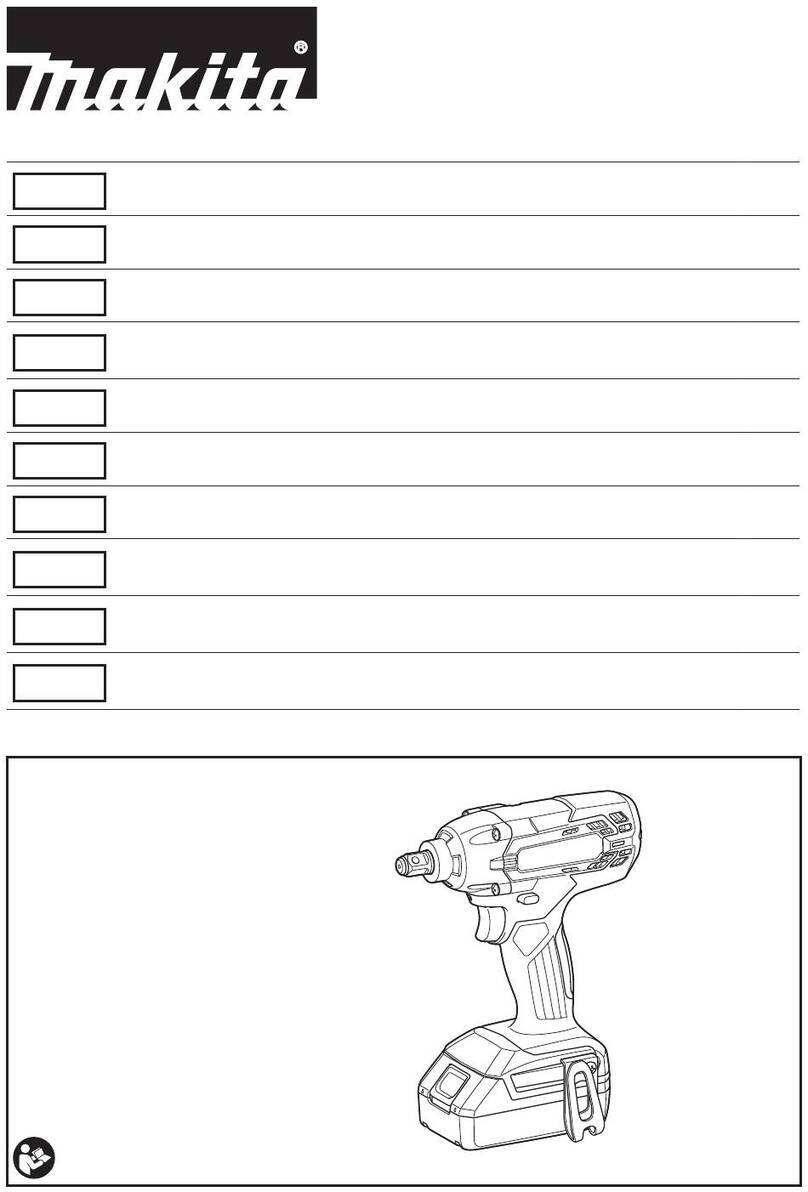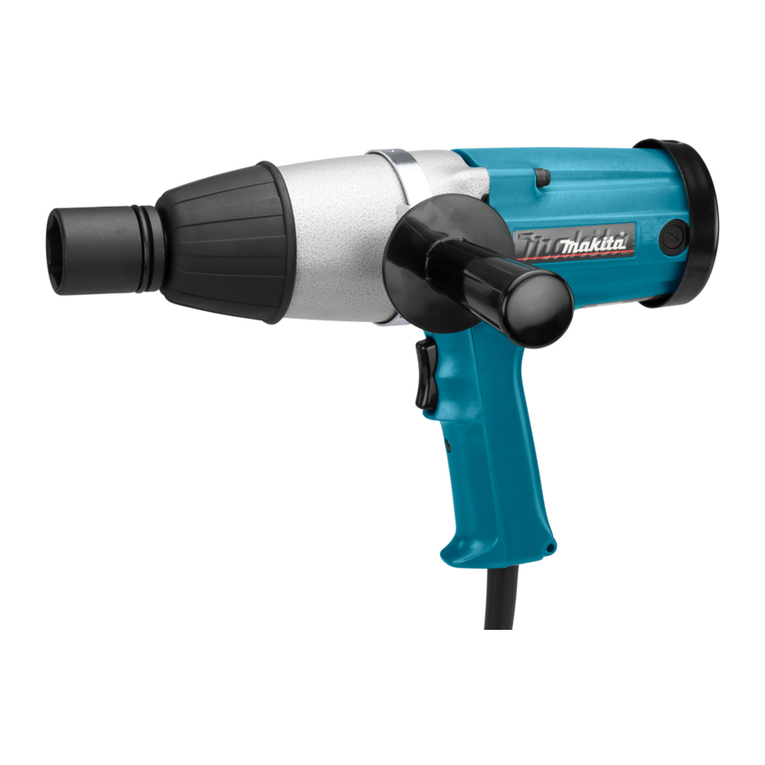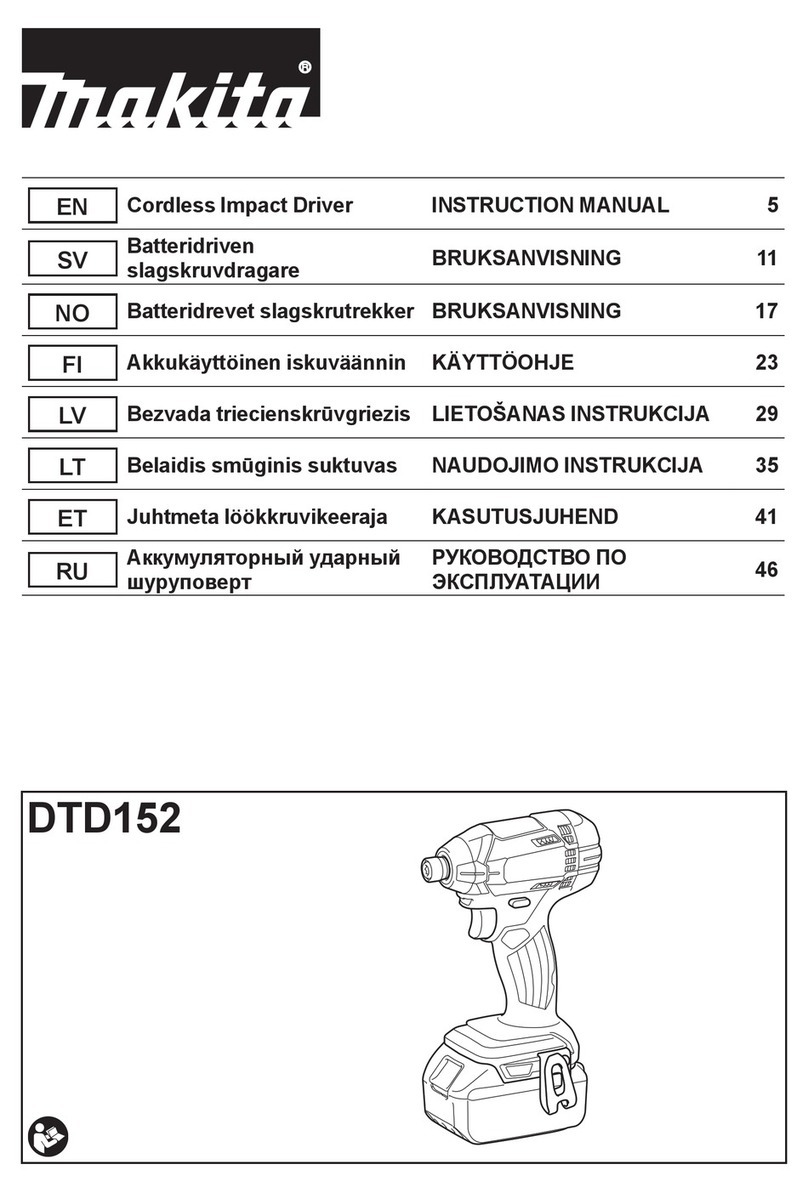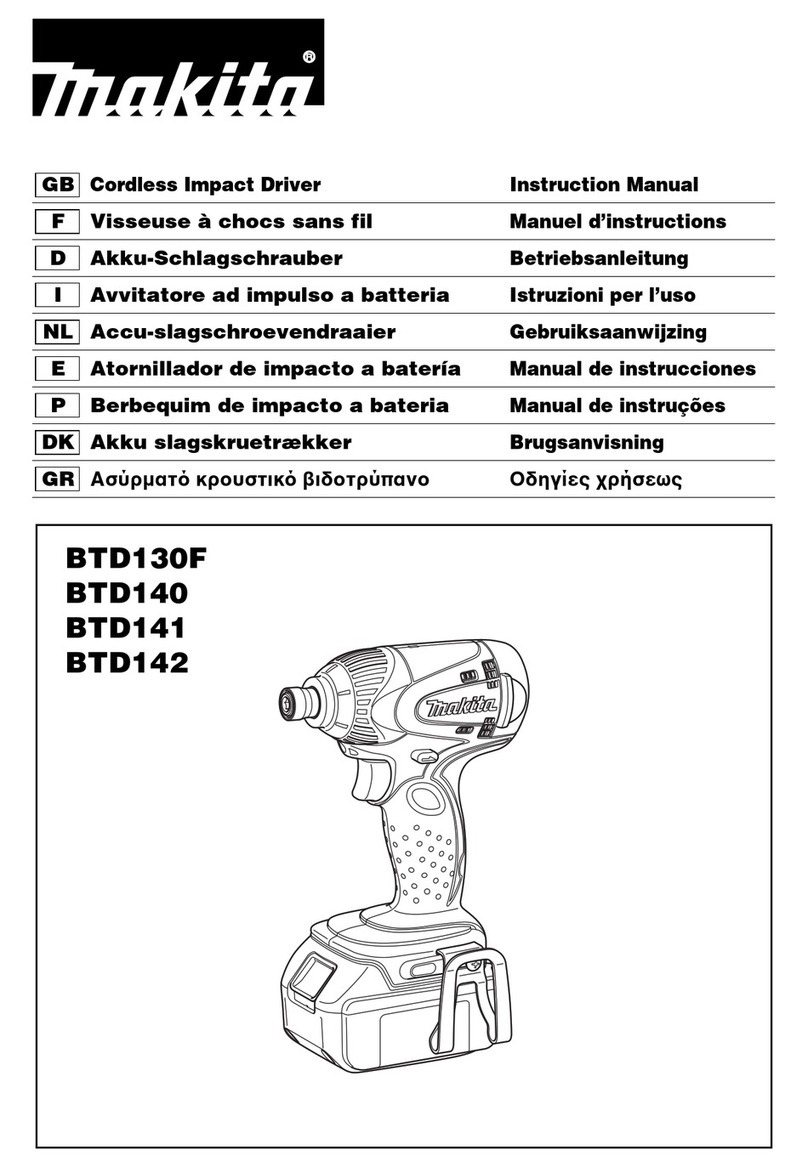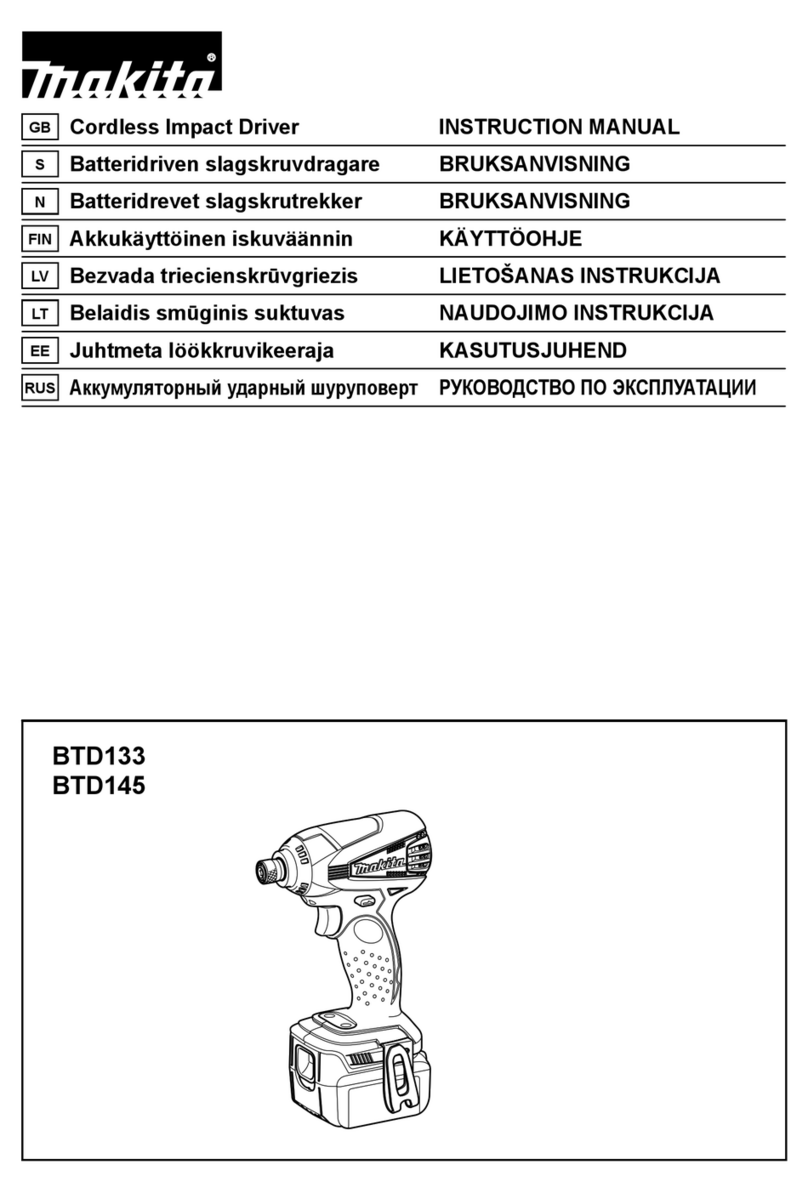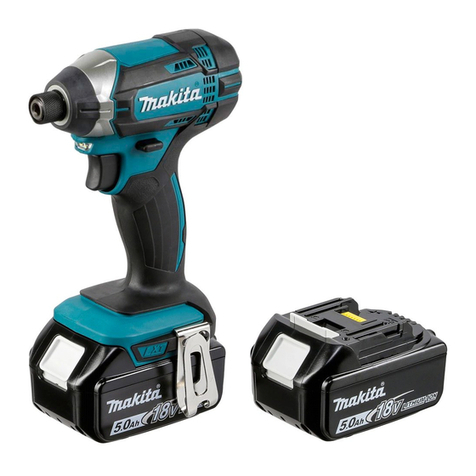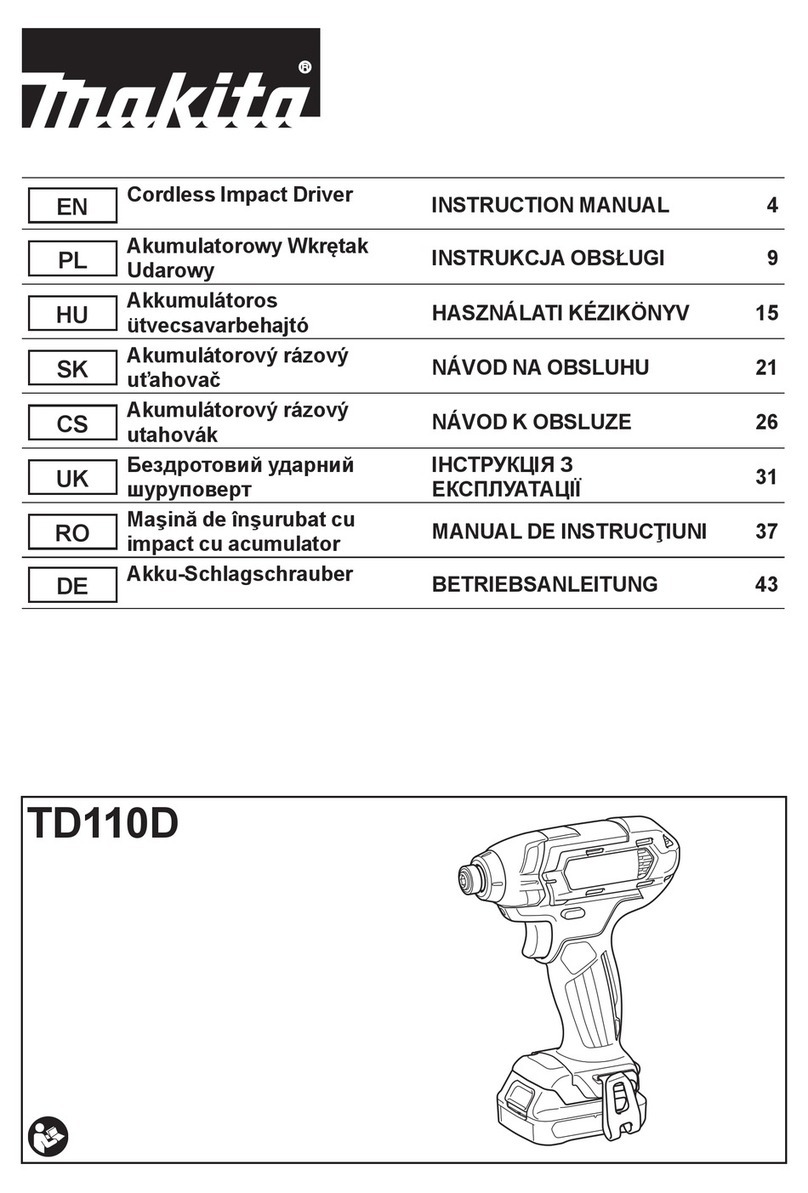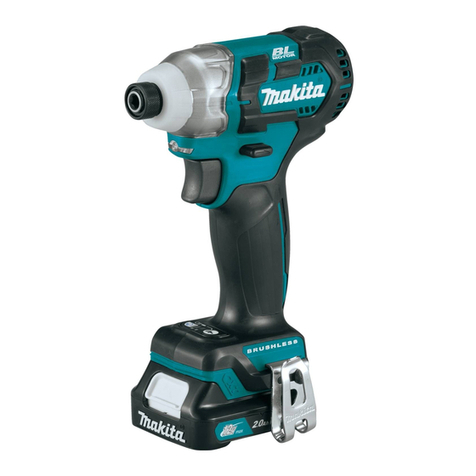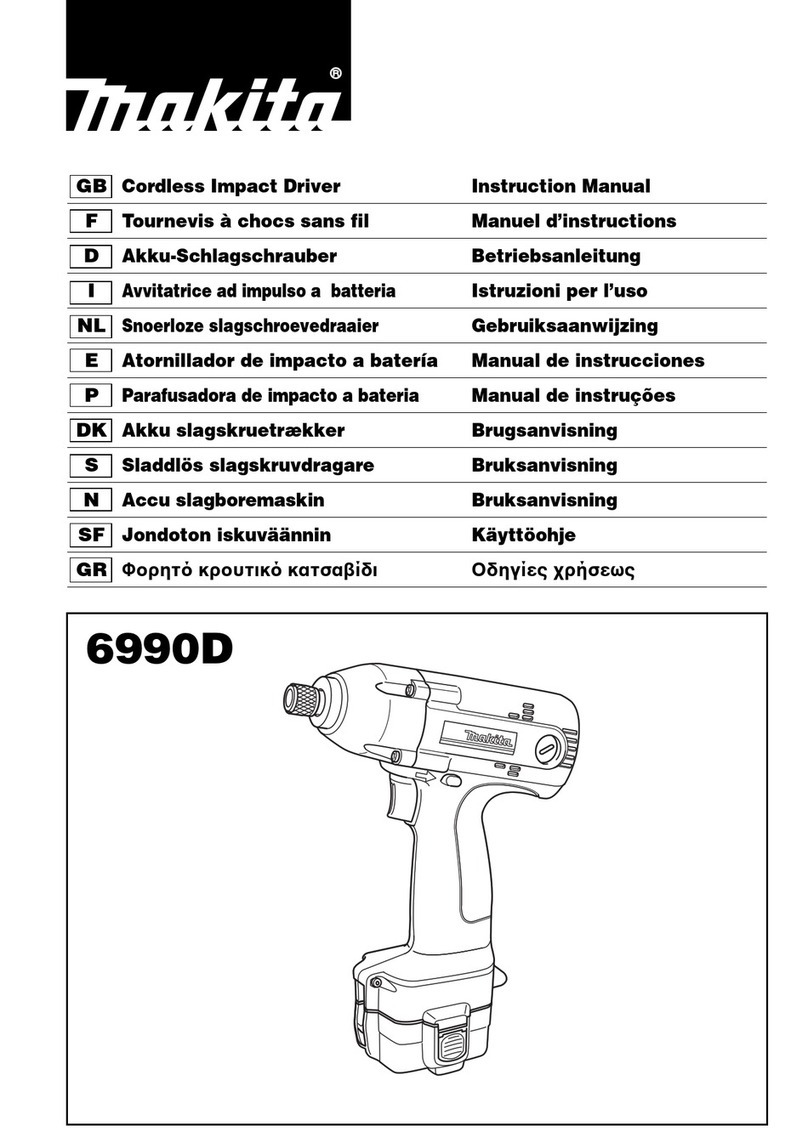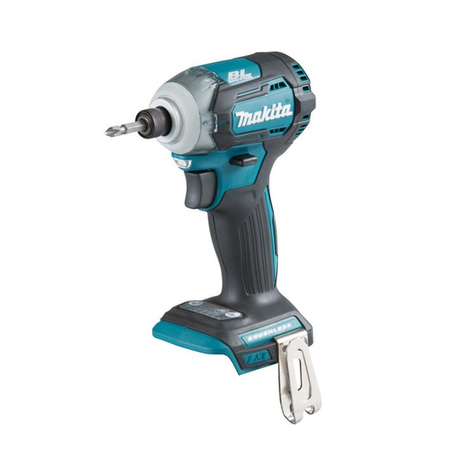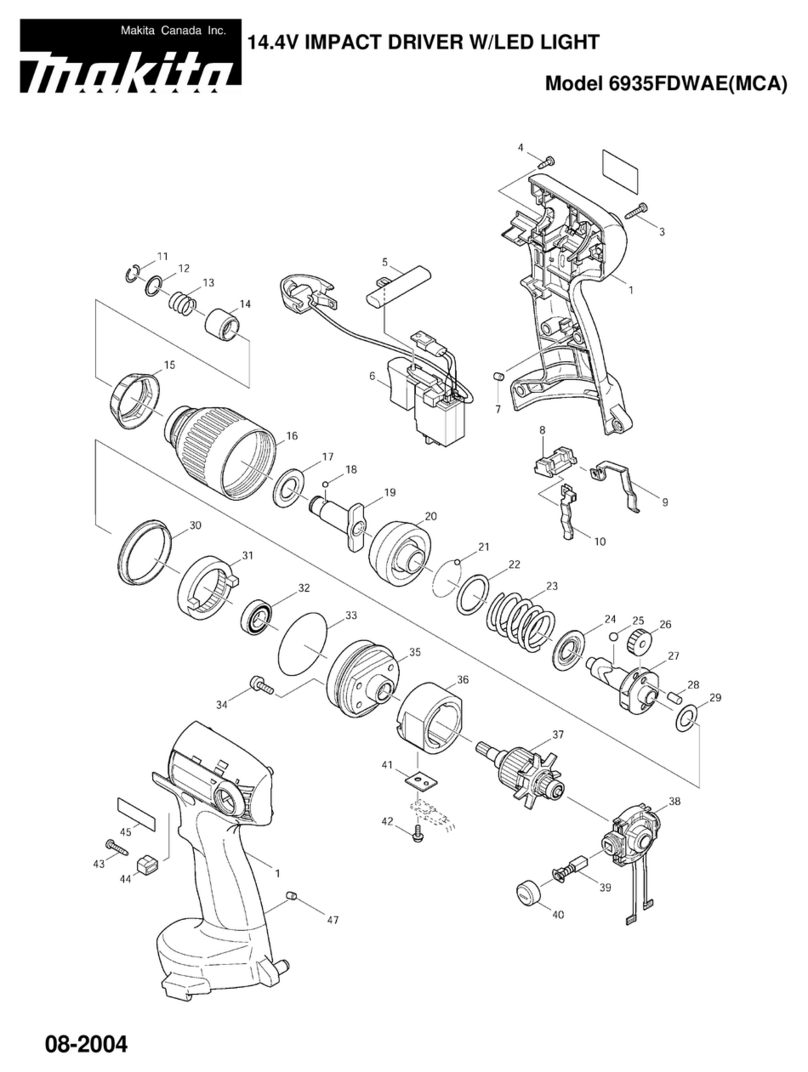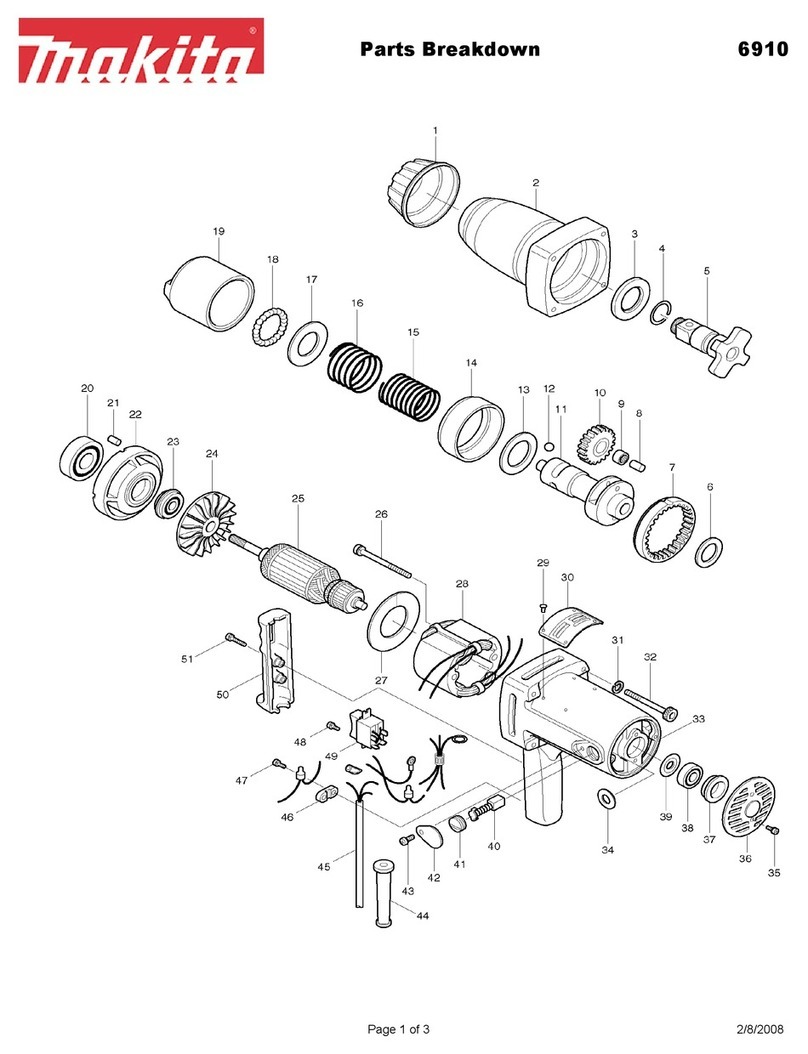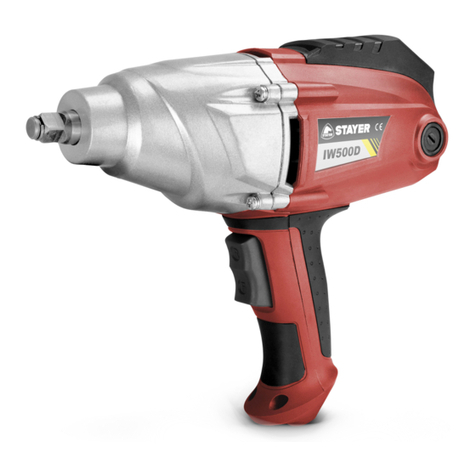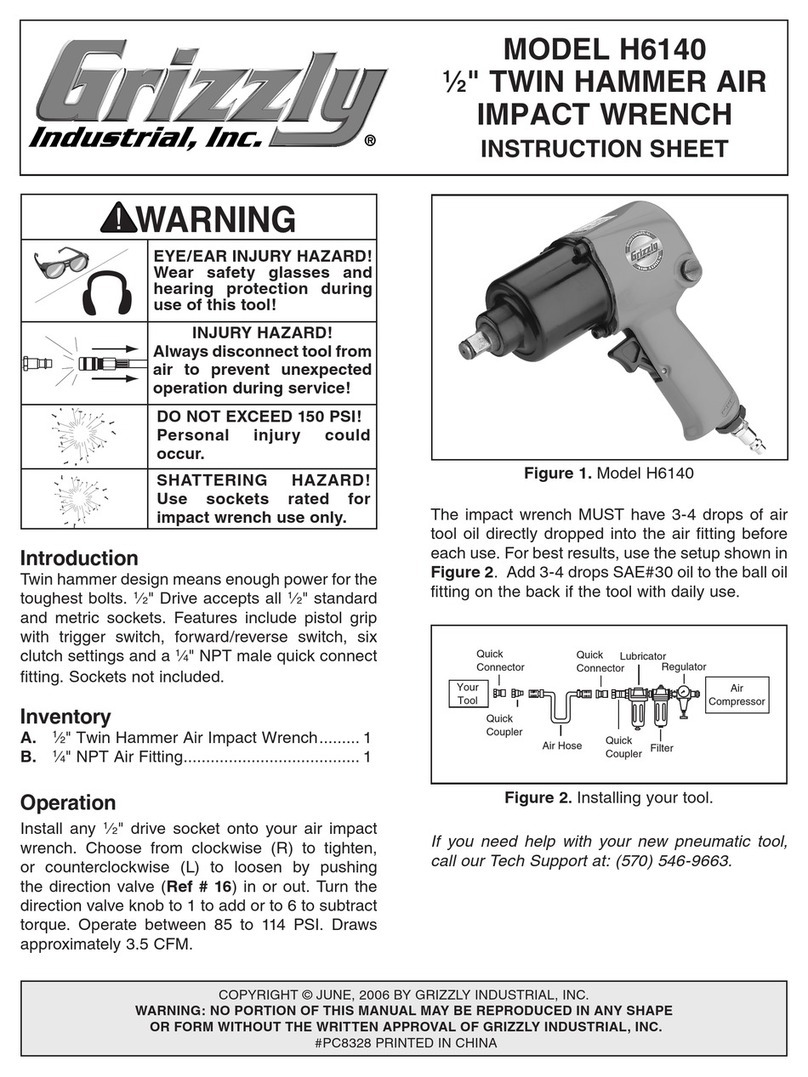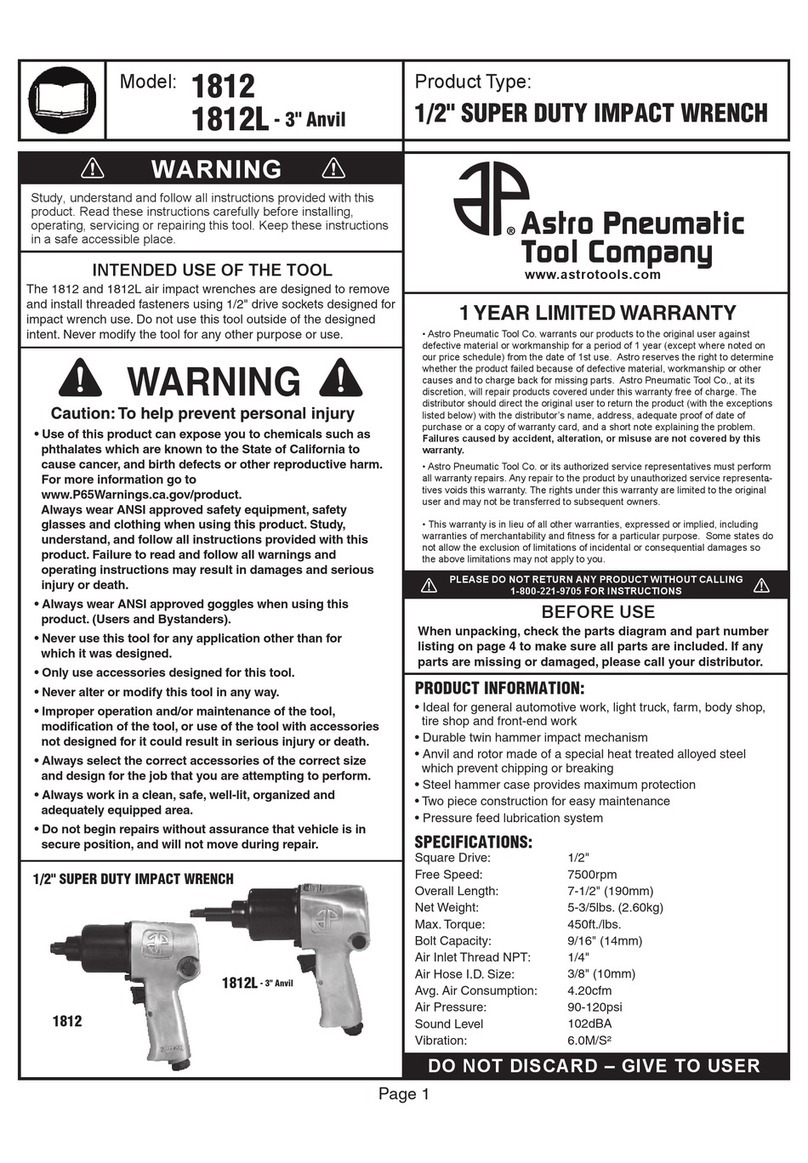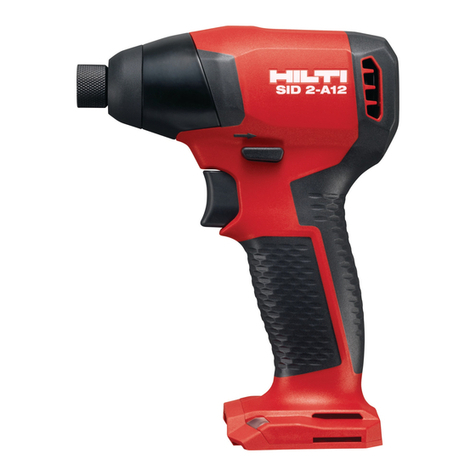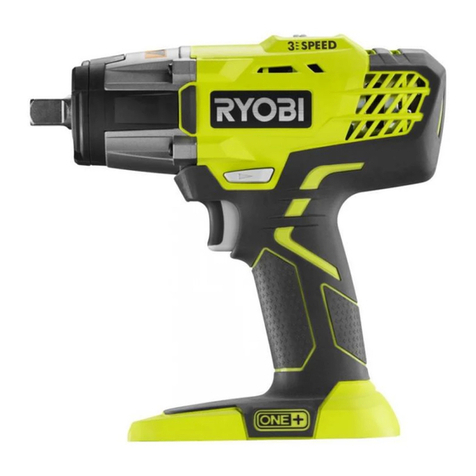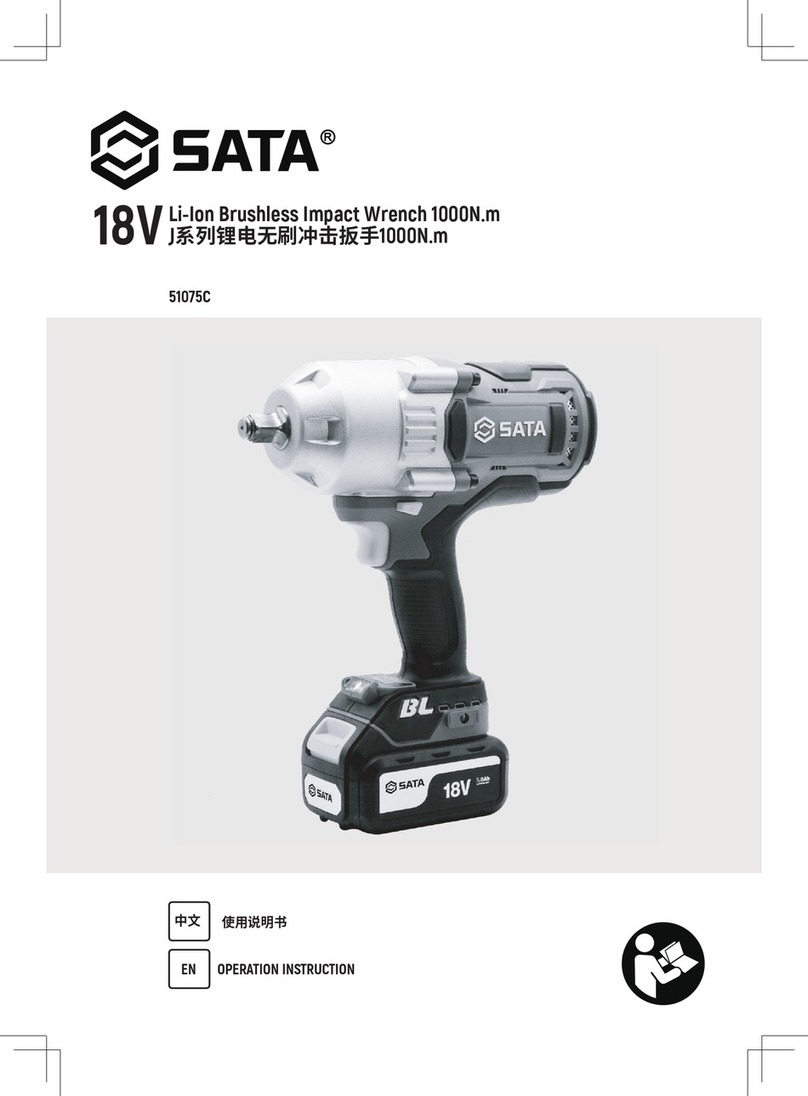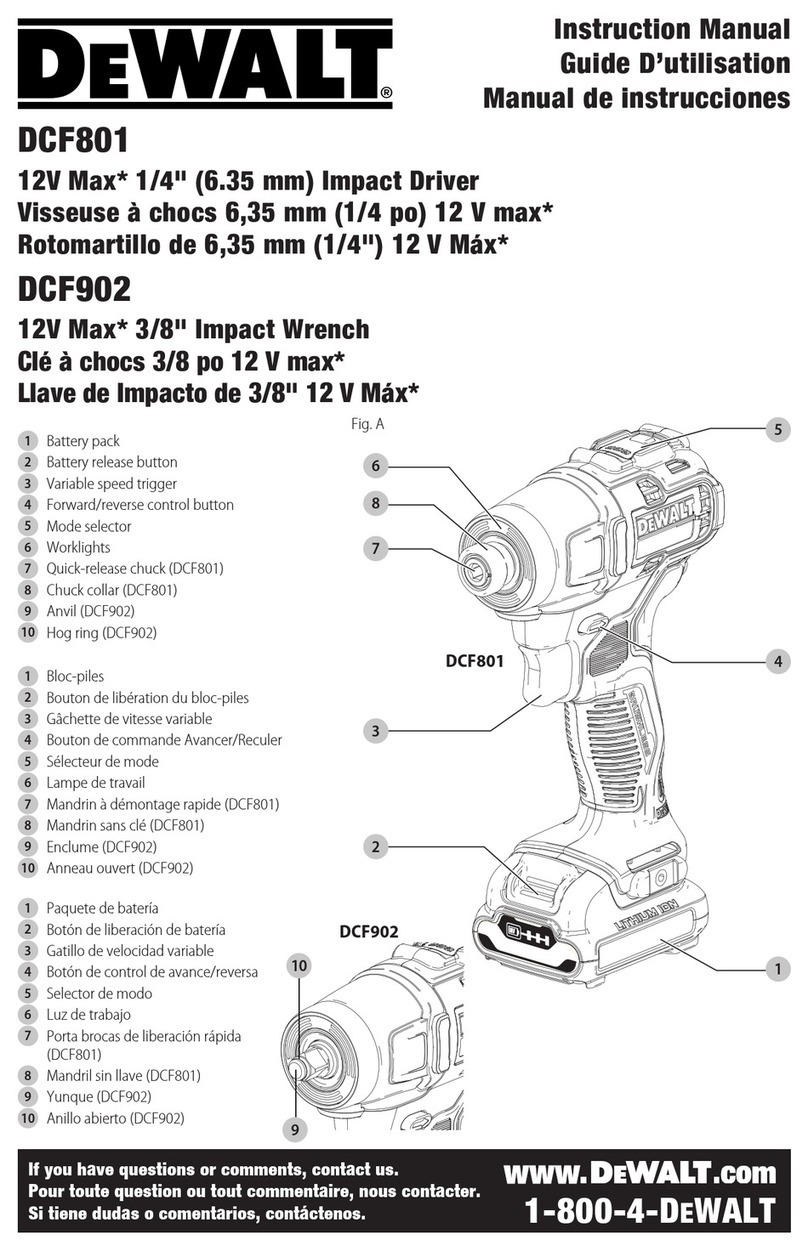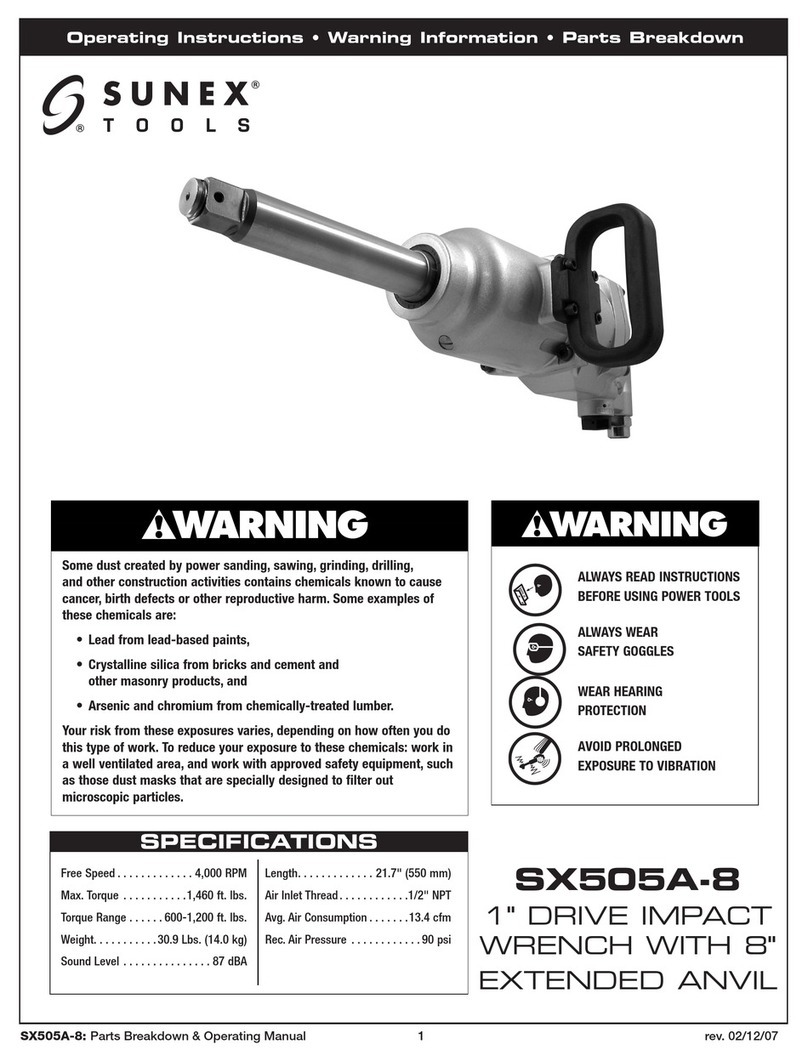Models No.
Description
PRODUCT
CONCEPT AND MAIN APPLICATIONS
P 1/ 12
BTD129 (LXDT08)*1
Cordless Impact Driver
Specification
Standard equipment
Optional accessories
Note: The standard equipment for the tool shown above may vary by country.
See the model variation list in the next page.
Model BTD129 (LXDT08*1) Cordless Impact Driver has been developed specially for
light to medium duty fastening applications.
This model is equipped with a basic BLDC motor (BrushLess DC motor) specially
designed to provide, above all, more work amount on a single full battery charge.
This product is powered by 18V-1.3(1.5*4)Ah/ 3.0Ah Li-ion batteries BL1815/ BL1830,
and available in the variations listed in the next page.
Battery
No load speed: min.ˉ¹=rpm
Impacts per min.: min.ˉ¹=ipm
Max. fastening torque*5:
N.m (kgf.cm/ in.lbs)
Charging time (approx.): min.
Capacities
Electric brake
Reverse switch
Weight according to
EPTA-Procedure 01/2003: kg (lbs)
Variable speed control by trigger
Capacity: Ah
Cell
Voltage: V 18V
0 - 2,500
0 - 3,200
160 (1,630/ 1,420)
Standard bolt
High tensile bolt
Machine screw
Driving shank
M5 - M14 (3/16 - 9/16")
M5 - M12 (3/16 - 1/2")
Coarse thread screw 22 - 125mm (7/8 - 4-7/8")
M4 - M8 (5/32 - 5/16")
Yes
Yes
Yes
LED job light Yes
1.3 (2.9)/ 1.5 (3.4)
1.3 (1.5*4)/ 3.0
Energy capacity: Wh 24 (2.7*4)/ 54
Li-ion
220
15/ 22 with DC18RC (DC18RA*4)
6.35mm (1/4") Hex
Max output (W)
*4for some countries only
*5The fastening torque at 3 seconds after seating, when fastening M14 high tensile bolt
*1 Model number for North and Central American countries
H
W
Dimensions: mm (")
Width (W)
Height (H)
Length (L) 147 (5-7/8)
79 (3-1/8)
226 (8-7/8)*2
244 (9-5/8)*3
*2: with Battery BL1815
*3: with Battery BL1830
Phillips bits
Socket bits
Drill chucks
Bit piece
Hole saws for Impact driver
Stopper for Impact driver
Hook set (Belt clip)
Drill bits with 6.35mm Hex shank
Battery protectors
Li-ion Battery BL1830
Li-ion Battery BL1815
Fast charger DC18RA
(for USA, Canada, Guam, Panama, Colombia, Mexico)
Fast charger DC18RC
(for all countries except the countries above)
Charger DC18SD
Charger DC24SC
Automotive charger DC18SE
L
[Drawn above is the image
with BL1830.]
TECHNICAL INFORMATION

